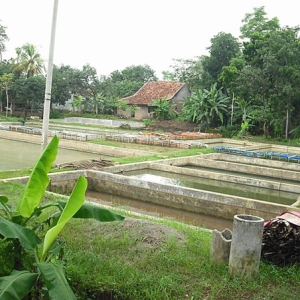Non-native species fuel over a third of global aquaculture annually—at what price?

A new study, with significant contribution from researchers at the Faculty of Fisheries and Protection of Waters at the University of South Bohemia, reveals that more than a third of the world’s annual aquaculture production comes from species farmed outside their native ranges. The research, led by Francisco Oficialdegui of the University of South Bohemia in České Budějovice, was carried out in cooperation with an interdisciplinary international team of colleagues and focused on the global consequences of using non-native species in aquaculture. The study was published in the journal Reviews in Aquaculture.
Aquaculture is a fundamental pillar of global food production and makes a significant contribution to human nutrition, food security, and the employment of millions of people. However, its rapid expansion in recent decades has also led to the movement of species beyond their native ranges. “Although non-native farmed species are highly productive and significantly contribute to human nutrition, they also carry environmental and socioeconomic risks if they escape from aquaculture facilities and successfully establish themselves in new environments,” says Oficialdegui.
Globally, since 1950, about one third of 560 species used in aquaculture (i.e. 160 species) have been farmed outside their native ranges. More than 80% of worldwide non-native species production comes from just ten countries – mostly in Asia. Fish dominate total aquaculture production (940 million tonnes), with non-native fish alone accounting for 182 million tonnes, or 19% of the total volume. The shares are even higher for non-native algae and crustaceans: 67% and 55%, respectively. Particularly striking is the more than 11,000% increase in non-native crustacean production since 2000 compared to the previous two decades, driven primarily by the farming of whiteleg shrimp and red swamp crayfish in non-native regions.
“This finding corresponds to the generally higher market value of crustaceans compared to fish and supports the idea that the motivation for farming crustaceans in aquaculture may now outweigh that for fish, as crustacean production is more associated with the economic security of farmers, whereas fish farming is typically linked to food security,” explains Francisco Oficialdegui.
The research team points out that many of these highly productive non-native species are associated with significant ecological and socioeconomic impacts. These include documented declines in native species populations, disruption of food webs, changes in nutrient cycles, and the collapse of traditional fisheries – many of which cannot be easily quantified economically.
Although non-native species farmed in aquaculture are often very profitable, they have also generated high financial costs. According to the InvaCost database, 27 out of 160 globally farmed non-native species have caused damage to ecosystems and economies amounting to up to 10 billion USD. Scientists caution that this figure is likely underestimated, due to significant gaps in the documentation of damages across regions and over time.
Remarkably, 40% of all non-native farmed species examined in the study have been officially listed as invasive on regional or global invasive species lists – suggesting that the true financial damages may be even much higher. These findings highlight the urgent need to improve biosecurity, prioritize native species in aquaculture, and strengthen international policies to mitigate the long-term ecological and economic risks associated with the aquaculture of non-native species.
